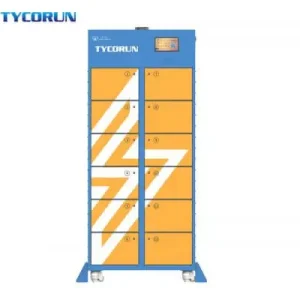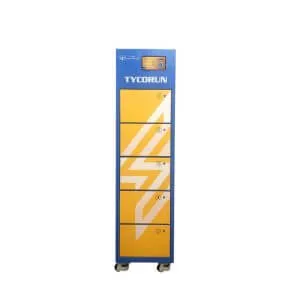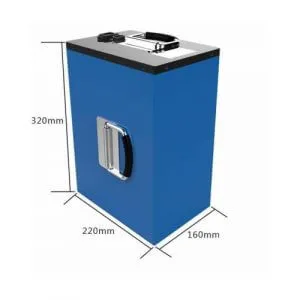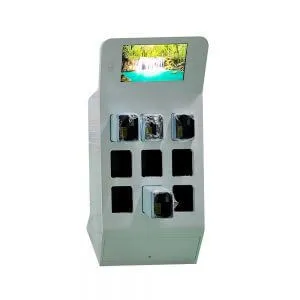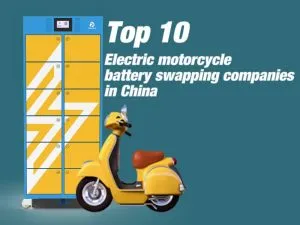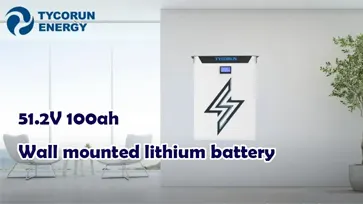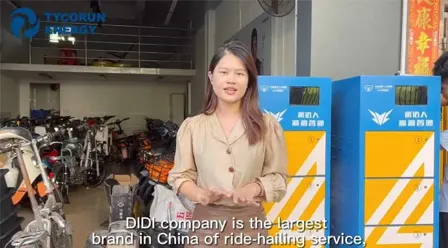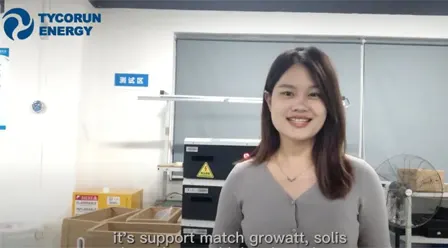Understanding the battery swapping station cost - a comprehensive guide
Battery swapping station cost
16-year professional lithium ion battery manufacturers, 10-year warranty on swapping battery packs, using the best BMS protection board, protecting the lithium battery pack from overcharge, overdischarge, overcurrent, short circuit, etc, with excellent self-discharge rate. Configurable Bluetooth, can be connected in series and parallel. The heating function and other special functions can also be customized. Enough stock for the 10 series of lithium ion swapping battery. Can be shipped within 3 days.


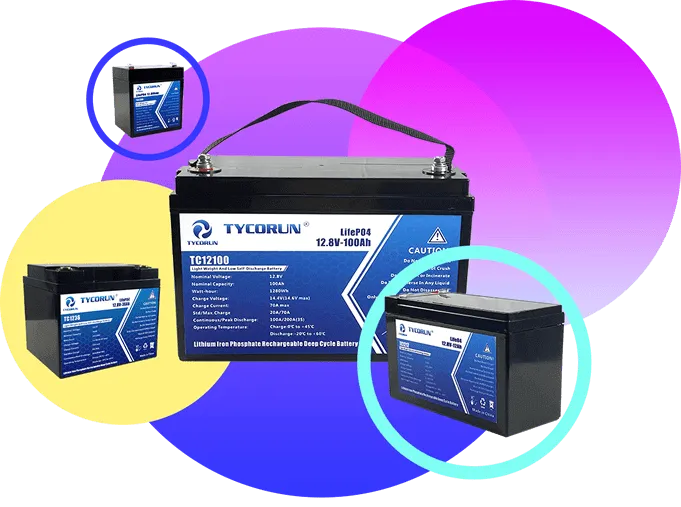
About lithium ion battery swapping manufacturers
TYCORUN® has more than 16 years of experience in the lithium battery swapping industry and is a Chinese high-tech enterprise that develops, produces and sells various battery swap products.
lithium ion swappable battery production capacity accounts for 80% of our lithium battery manufacturing products
High quality assurance
TYCORUN is determined to become a leader in the lithium battery industry, quality is our culture!
Professional manufacturers
With lithium ion battery pack as the core, integrating channels and technologies
Factory wholesale price
We promise to let customers get the most cost-effective lithium battery products
Reliable Service Assurance
Provide lithium ion battery OEM, ODM, 1 MOQ.Full Set of Certificate
Recently, two-wheeler battery swapping facilities have drawn a lot of interest. Knowing the cost implications of setting up a battery-swapping station is essential for people, companies, and governments considering investing in this technology.
However, what exactly is the battery swapping station, and what is battery swapping station cost? We will go over the advantages and variables influencing battery swap station prices in this article. After reading this guide, you should be better prepared to decide if operating a battery swapping station is a good idea.
Main content:
- What are battery swapping stations?
- Benefits of battery swapping stations
- User’s battery swapping station cost-how to save money?
- Operator’s battery swapping station cost-how to make money?
- What are the factors that affect battery swap station cost?
- TYCORUN cost-effectiveness battery swapping station
- TYCORUN battery swapping business model
- How to reduce the investment in battery replacement stations in the early stage

What are battery swapping stations?
Battery swapping stations are facilities that allow drivers with the swapping feature in their motorcycles to replace their depleted batteries with fully charged ones quickly. Unlike the traditional charging system, which requires drivers to wait to recharge their batteries, battery-swapping stations save drivers time by changing a new battery in sevaral mintues.
However, battery swapping requires standardization, coordination, and expenditure by car manufacturers, battery suppliers, and station operators. Currently, only a few companies, like TYCORUN and Gogoro, provide battery-swapping service in select regions.
Benefits of battery swapping stations
Environmental Benefits
A promising way to reduce emissions and pollution caused by fossil fuel-powered motorcycles is the extensive use of electric motorcycles. By making the shift to electric motorcycles simpler, battery swapping stations may be very helpful in promoting this change. This might contribute to a cleaner and more sustainable future.
Policy Benefits
Battery swapping stations may help the government promote electric motorcycles and reduce reliance on imported oil. They may also generate new employment and businesses in the EV industry, as well as promote innovation and competition among motorcycle manufacturers and battery suppliers.
Time-saving benefits
Battery swapping stations may provide quicker and more convenient way to refill their batteries for electric motorcycle customers, particularly on takeaway and express delivery industry or in places with limited charging infrastructure. This reduces electric motorcycle fleets’ charging downtime and maintenance costs.
Scalability Benefits
As the demand for electric cars increases, battery-swapping stations may be extended. Additional stations might be placed in high-traffic locations or along popular travel routes to provide a comprehensive network of switching stations. This scalability guarantees that consumers have a stable and efficient charging option no matter where they are.
Reduced Infrastructure Benefit
Battery swapping stations need less expenditure in terms of electrical grid modifications and the construction of multiple charging stations. Swapping stations usually have a smaller footprint, making them more space-efficient and cost-effective to deploy. This can promote the development of charging infrastructure in regions where regular charging stations may be difficult to build.
User’s battery swapping station cost-how to save money?
● Lower energy supplement cost: The cost of battery replacement systems is relatively lower than the cost of obtaining natural gas. Because electricity is still cheaper than gasoline to a certain extent.
● No need to buy batteries: Battery swapping stations allow users to rent batteries rather than purchase them, which may significantly reduce the initial cost of purchasing an EV. Customers can swap batteries as frequently as necessary by paying a monthly subscription for the battery service. Because consumers can always get the newest and highest-performing batteries, this also removes the danger of battery deterioration and obsolescence.
● Save the cost of maintenance and battery replacement: Users may save money and avoid the hassle of maintaining and replacing their batteries—which may be expensive and time-consuming—by using battery swapping stations. The battery swapping station operators are responsible for ensuring the quality and safety of the batteries.
Operator’s battery swapping station cost-how to make money?
The cost and revenue of an operator’s battery swap stations depend on a variety of variables, including the number and type of batteries, the location and size of the battery swap stations, the demand and frequency of battery swaps, and pricing and subsidy regulations. Here are some things to consider:
Operator’s Battery Swapping Station Cost
A typical battery swap station consists of battery swap cabinets, batteries, software platforms and other parts. The price of each component may vary based on quality, capacity, and features. The main costs associated with running a battery switching station are initial investment, ongoing operation and maintenance expenses, battery depreciation and energy costs. Peak and off-peak hours and local electricity prices determine how much your electricity bill will be.
How To Make Money?
The time it takes for a battery swap station to recover its original investment and start making profits is called the profit cycle. The fees paid for subscribing to battery swapping services for electric motorcycles are the main source of income for battery swapping stations. Different subscription fees can be set based on mileage or usage time. In addition, in order to promote the use of electric motorcycles, the government may provide additional subsidy fees. Depending on the above variables, the profitability of a battery swap station is clear. TYCORUN have a profit mathematical model to calculate costs and benefits, you can contact us to get it for free.
What are the factors that affect battery swap station cost?
Battery swap station costs are the total expenditures associated with building and operating these facilities. As a result, the cost of the battery changing station might vary based on several parameters, including:
● The number and type of batteries: The more batteries a station has to store and charge, the higher the initial investment and electricity or energy generation costs. The cost is also affected by the technology of the battery since various batteries have varying sizes, capacities, performance, and lifespans.
● The number and size of the station: If more battery swap stations are needed, the number of power swap cabinets will need to be increased, resulting in a higher cost ratio. At the same time, if it is planned that an outlet can accommodate more batteries and support more users, then multi-storage battery swapping cabinets are necessary.
● Incorporating renewable energy and storage systems: Adding storage devices and renewable energy sources to a battery swapping station may lower the station’s carbon footprint and electrical prices. Examples of these technologies are solar photovoltaics and static batteries. However, they significantly raise the station’s initial cost and complexity.
● The pricing and subsidy policies: How much EV customers pay for battery swapping and how much the station operators get from the government or manufacturer depends on pricing and subsidy schemes. Along with customer approval, these regulations may have an impact on the station’s earnings and profits.
TYCORUN cost-effectiveness battery swapping station
One of the most advanced and cost-effective facilities is the TYCORUN Battery Station. Currently, the power swap cabinet has 5 ports, 8 ports, and 12 ports. The 12 ports soft-connect battery swapping cabinet can charge batteries of different voltages (48, 60 and 72 V). A variety of options for power replacement cabinets allow you to choose the product that best meets your needs, thereby maximizing savings.
TYCORUN battery swap systems combine advanced charging, battery swap management and monitoring systems to ensure optimal performance and battery life. It also provides real-time battery maintenance and detection functions to detect the status of batteries and power swap cabinets at the lowest cost. Operators can obtain services such as data analysis and positioning through its battery swapping software platform.
TYCORUN provides a complete set of solutions for electric motorcycles, battery swapping platforms, battery swapping cabinets and batteries. Choosing TYCORUN can complete the required components for battery swapping at one time, thus saving time and money.
TYCORUN battery swapping business model
TYCORUN battery swapping business model includes a complete system of battery swap cabinets, batteries, electric motorcycles, and battery swap platforms. It also provides project planning, technical support and other services.
Here is the basic outline of a battery replacement business model:
First, TYCORUN will assist operators to establish a network of battery exchange stations in places with high electric motorcycle traffic, such as city centers, highways and popular tourist routes. In this process, TYCORUN has the hardware and software facilities required for battery swapping, and merchants only need to purchase them to use. Since TYOCRUN’s existing battery and electric motorcycle models have been connected and debugged, there is no need to worry about battery replacement if you purchase batteries and electric motorcycles at the same time.
At the same time, TYCORUN has simplified the exchange process to minimize the downtime of electric motorcycles. This includes designing a user-friendly interface, optimizing battery swapping equipment, and developing an easy-to-operate back-end control platform. After the power swap cabinet is put into use, the TYCORUN power swap platform can use data analysis to optimize the layout of the power swap station, predict demand patterns and improve operational efficiency over time. Offer customers the option to subscribe to a membership plan or pay individually for each battery replacement through a membership or pay-per-use model. Membership plans can be set up and planned based on frequency of use or distance traveled.
Overall, the TYCORUN battery swap business model combines technological innovation, operational efficiency, and customer-centric concepts to provide operators with a profitable business model that is light on assets.
How to reduce the investment in battery replacement stations in the early stage
Some possible ways to reduce the investment in battery swapping stations in the early stage are:
● Standardization and modularization: Designing and building battery swap stations using standardized and modular components can significantly reduce upfront costs. These components are typically easier to install and can be adapted to different locations and needs without requiring extensive customization, thus saving on construction, equipment, and maintenance expenses.
● Optimized planning: Conduct thorough market research and analysis to accurately determine the required number of power swap cabinets, batteries, and motorcycles needed to meet local market conditions. Overestimating or underestimating these requirements can lead to unnecessary costs or operational inefficiencies.
● Soft connector instead of hard connector: Utilize soft connector instead of hard connector for power replacement cabinets. Soft connector tend to be cheaper initially and can help maximize savings on the initial investment. However, it’s essential to ensure that soft connector still provide the necessary functionality and durability for efficient operation.
● Cost-effective solutions: Explore cost-effective solutions offered by reputable providers in the market. For example, TYCORUN provides a complete power swap solution that includes all the necessary components and support for setting up a battery swap station. Choosing such solutions can streamline the process and potentially reduce overall costs.
Conclusion
The battery-swapping station cost is important for both individuals and start-ups looking to venture into the concept. Having an idea can give you the edge in mapping out your profit and its overall benefits in the long run. This article has thoroughly discussed that from both the rider’s and investors’ points of view. Finally, the TYCORUN battery swapping station model is a recommendation that can help you cut costs and let you enjoy this innovative concept.
Video Gallery
Lithium ion Battery News
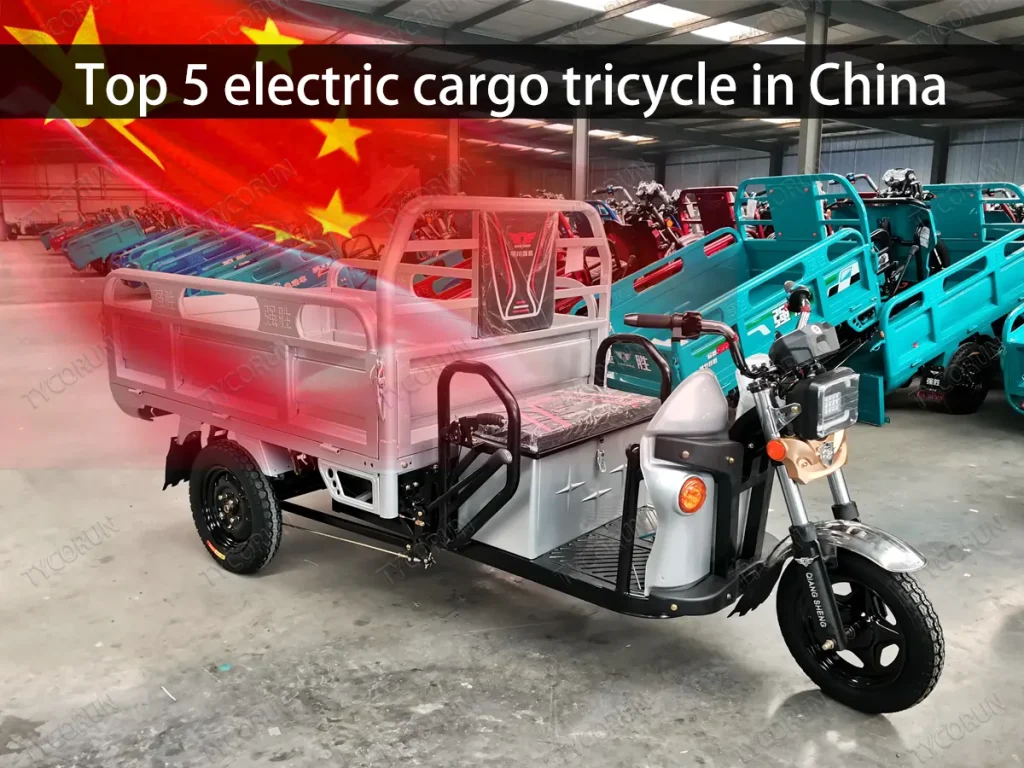
Top 5 electric cargo tricycle in China
Electric cargo tricycles have emerged as versatile solutions for transportation needs in rural China. This review presents the top 5 electric cargo tricycles in China, featuring detailed specifications and performance insights. Evaluating criteria such as load capacity, battery efficiency, and safety features, this guide assists buyers in selecting the ideal tricycle based on individual requirements. Each tricycle’s unique design and capabilities cater to diverse transportation demands, ensuring reliability and efficiency in agricultural and daily use scenarios.
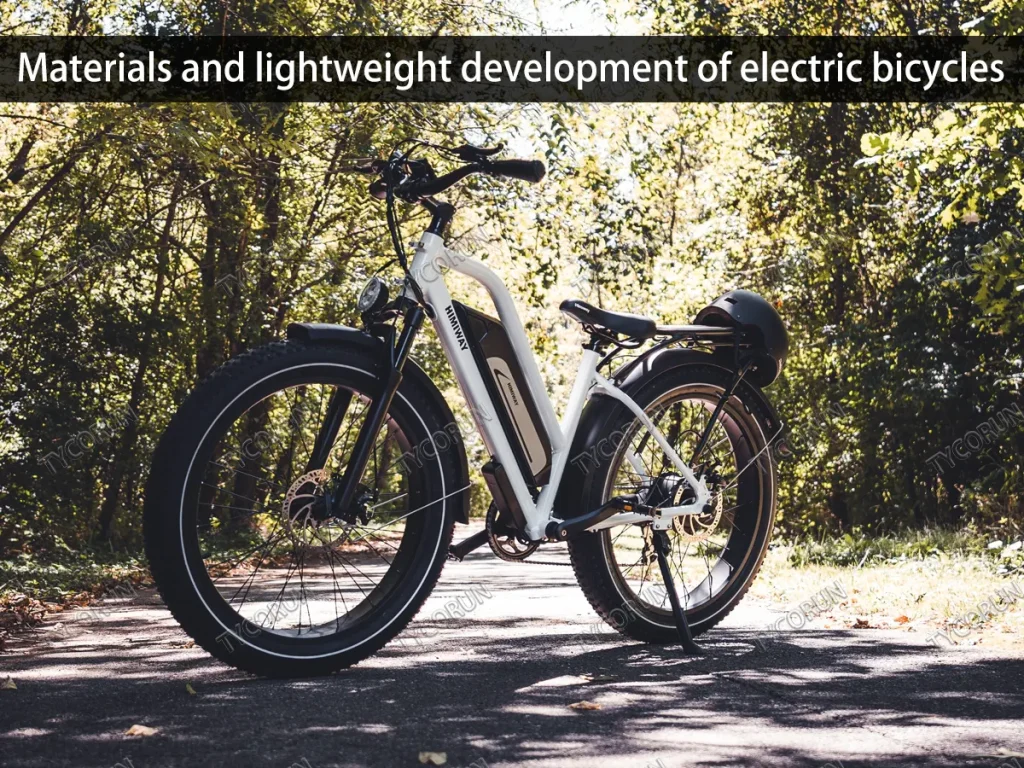
Materials and lightweight development of electric bicycles
This article provides an insightful exploration into the development of electric bicycles, focusing on advancements in materials and lightweighting techniques. It delves into the historical evolution of electric bicycles, analyzes various bicycle frame materials, discusses the development of electric power assist technology, and offers an overview of the electric assist bicycle market. Through detailed examination and analysis, it highlights the importance of lightweighting for electric bicycles and identifies key trends shaping the industry’s future.

Top 10 electric moped bicycles in China
The electric moped bicycle market in China offers a diverse range of options catering to various riding needs, from urban commuting to off-road adventures. This article highlights the top 10 electric moped bicycles in China, providing key specifications and features of each model. With an emphasis on performance, battery range, motor type, and frame materials, potential buyers can make informed decisions based on their specific requirements.

Electric bicycle buying guide
This electric bicycle buying guide offers comprehensive insights into the world of electric-assisted bicycles, aiding prospective buyers in making informed decisions. Covering topics ranging from the types and advantages of electric bicycles to specific components and essential considerations when making a purchase, this guide serves as a valuable resource for individuals navigating the increasingly popular electric bicycle market.

Top 5 kids electric motorcycle in China
The emergence of electric motorcycles for children in China has sparked a new era of safe, sustainable, and exciting rides for young adventurers. Parents are increasingly turning to these electric models not only to cultivate their children’s riding abilities but also to foster meaningful parent-child interactions and instill a deeper appreciation for mechanics and sportsmanship. This shift towards electrification reflects a growing trend in the children’s vehicle market, where manufacturers are prioritizing safety, eco-friendliness, and versatility.
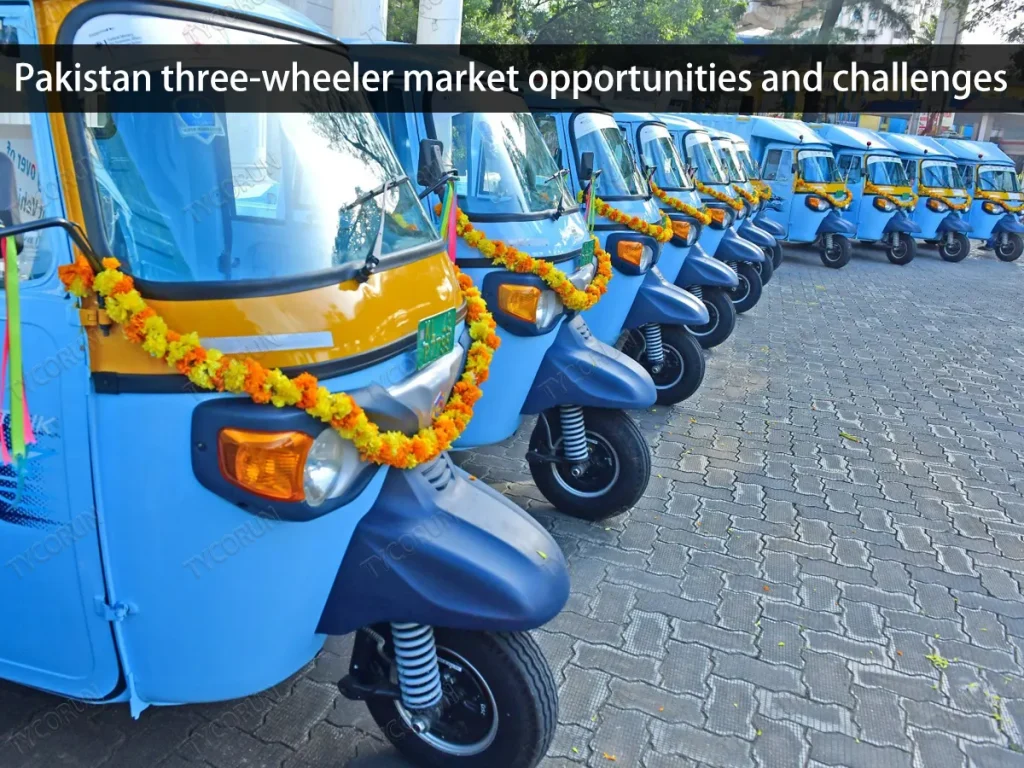
Pakistan three-wheeler market opportunities and challenges
Exploring Pakistan’s dynamic three-wheeler market, navigating economic challenges and regulatory complexities. Uncover diverse tricycle types, factors impacting pricing, and key challenges like fraud prevention and regulatory compliance. Gain valuable insights to foster innovation and resilience in this evolving sector.

